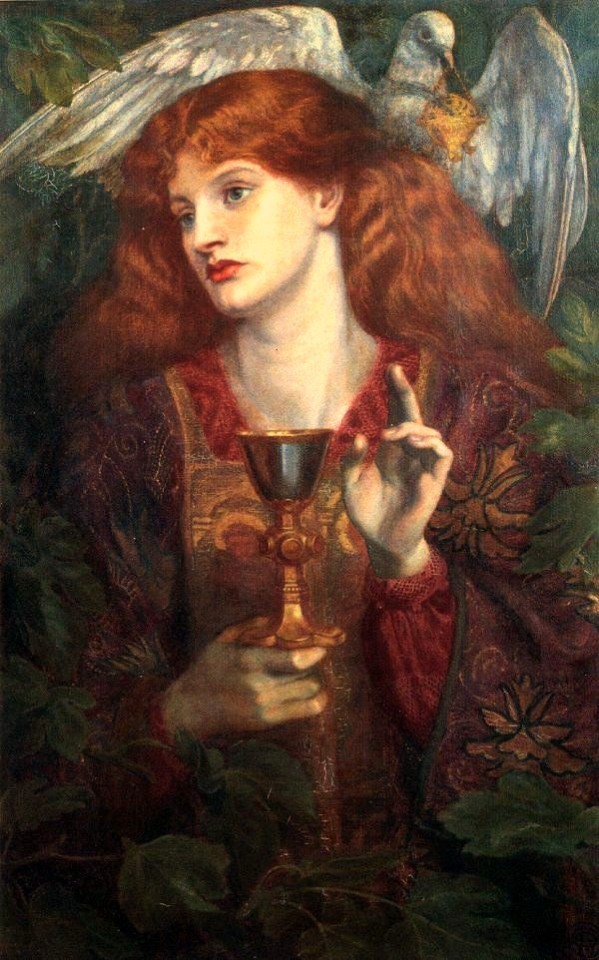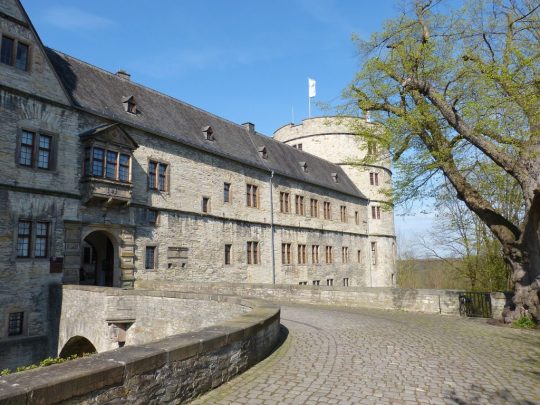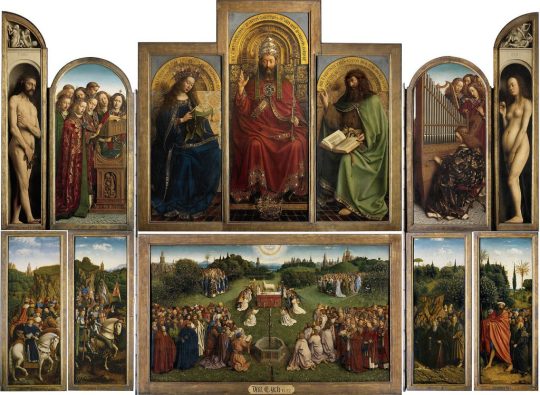#(the adoration of the mystic lamb/the ghent alterpiece)
Explore tagged Tumblr posts
Text

The Mountain Goats, Steal Smoked Fish + Jan van Eyck, The Adoration of the Mystic Lamb (closed view)
#the mountain goats#jan van eyck#ghent alterpiece#gent alterpiece#Adoration of the Mystic Lamb#web weaving#this is funny only to me#basically that guy in the bottom left hand corner is Joos Vijd who commissioned the painting basically in exchange for the monks to pray fo#his entry into heaven#so this paining is basically him asking to be blessed lol#anyways don't get me started on this fucking alterpiece i have so much to say about it#and i'm going to actually get to see it irl in march!!!!#c
113 notes
·
View notes
Text

jan and hubert van eyck. the ghent alterpiece or the adoration of the mystic lamb, 1432.
2 notes
·
View notes
Text
.
#to post a long comment explaining why the lamb on het lam gods#(the adoration of the mystic lamb/the ghent alterpiece)#looks ‘‘weird’’ after the most recent restorations OR to be not extremely annoying#im going to go w the not being annoying tonight
0 notes
Text
Hitler and the Holy Grail

It is widely known that the Nazi party was obsessed with ancient history and the paranormal. They even went as far as to create an entire think tank dedicated to finding ancient relics and mounting expeditions all over the world in order to find ancient relics. The most coveted relics were related to Jesus Christ, such as the famous Ghent Altarpiece, the spear of Destiny and, above all, the Holy Grail.
The Ahnenerbe
The Ahnenerbe is the name of the think tank which was in effect from 1935 to the end of World War II in 1945. It was established by Hitler's right hand man, Heinrich Himmler who was in charge of the SS. The purpose of the Ahnerbe was primarily to connect the Nazi party with the mythologized history that Hitler and Himmler believed about the Aryan race and racial superiority.

The Symbol of the Ahnenerbe contains the magic runes of ancient Germanic lore. Himmler recruited a retired soldier turned occultist named Karl Wiligut who was practicing what he considered to be a reconstruction of ancient Aryan religion which he referred to as Irminism. Wiligut believed that there were ancient Germanic settlements in the Black Forest and mounted expeditions to ruins located deep within the woods. He also laid out a series of prophecies which lead to Himmler selecting Wewelsburg Castle as the headquarters for the paranormal wing of the SS.

Wewelsburg became the headquarters of the paranormal division of the SS. Inside Wewelsburg, Himmler dedicated a large room to the Holy Grail with a large crystal as a placeholder.
Ariosophy
Ariosophy or "the wisdom of the Aryans" was an ideological system which flourished in Germany and Austria from the late 19th century into the 1930s. By blending Germanic Romanticism with the concurrent popularity of Theosophy, a few key thinkers formulated Ariosophy as an alternative to Christian history. The two leading thinkers in Ariosophic thought were Guido Von List and Jörg Lanz von Liebenfels. Both of these thinkers focused on resurrecting the Runic Magic used by ancient Germanic people in the area. Runic Magic is actually well documented at the time of the Roman Empire but differs from what we may think of Runic Magic in the Nazi era. According to Tacitus: Followers of Ariosophy believed that the magic of the runes was not in the way they were used as a form of divination by throwing them and reading the tea leaves, as it were. They were focused on intrinsic magic which they thought were part of the runes themselves. This was also true of important artifacts of history, which were seen as containing symbolic information which was magical in and of itself. They attach the highest importance to the taking of auspices and casting lots. Their usual procedure with the lot is simple. They cut off a branch from a nut-bearing tree and slice it into strips these they mark with different signs and throw them at random onto a white cloth. Then the state's priest, if it is an official consultation, or the father of the family, in a private one, offers prayer to the gods and looking up towards heaven picks up three strips, one at a time, and, according to which sign they have previously been marked with, makes his interpretation. If the lots forbid an undertaking, there is no deliberation that day about the matter in question. If they allow it, further confirmation is required by taking auspices.Germania - Tacitus
Irminism
Irminism is not an established religion. Rather, it is a reconstruction of what Nazi occultists believed to be true based on historical evidence they thought they had at the time. Often, they adapted ancient beliefs to fit better with Hitler's own ideology. According to ancient Roman sources, such as Tacitus, Germanic tribes of the North believed in a god named Irmin. Irmin was worshiped at an ancient site called an Irminsul which was a giant wooden pillar, presumably of ancient historical importance. Irminsuls were a type of altar that was made from a large wooden column. Widukind of Corvey describes an Irminsul he observed in 970AD after some Saxons erected a large Irminsul to commemorate their victory in a battle: When morning was come they set up an eagle at the eastern gate, and erecting an altar of victory they celebrated appropriate rites with all due solemnity, according to their ancestral superstition: to the one whom they venerate as their god of Victory they give the name of Mars, and the bodily characteristics of Hercules, imitating his physical proportion by means of wooden columns, and in the hierarchy of their gods he is the Sun, or as the Greeks call him, Apollo. From this fact the opinion of those men appears somewhat probable who hold that the Saxons were descended from the Greeks, because the Greeks call Mars Hirmin or Hermes, a word which we use even to this day, either for blame or praise, without knowing its meaning.Deeds of the Saxons - Widukind of Corvey Among ancient Germanic tribes, one particular Irminsul was more famous than all the others. Believed to be near modern day Heresburg, Germany, this Irminsul was seen as the center of ancient Saxon religion. As such, it was a target for military conquests and was ordered to be destroyed by Charlemagne in 772 AD. The destruction of the most famous Irminsul by Charlemagne. Wiligut was convinced that the true ancient religion of Irminism began in 12,500 BC and was supplanted by inferior religions later. He believed this so strongly that he frequently performed Irministic rites and ceremonies with high ranking SS officers in attendance. Wiligut chose Wewelsburg as the site of the headquarters for the SS's paranormal activities because of an ancient legend known as the Battle of the Birch tree about a Western army defeating an Eastern army in battle. He also chose the site because he believed it was a center of cultic energy based on reading ancient runes. In fact, Wiligut is still considered by many to have been an accomplished rune magician. Despite having common roots, Wiligut did not believe that Ariosophy was the real, true reconstruction of ancient Germanic religion and was key in persecuting followers of the rival ideology.
The Ghent Altarpiece
The Nazi quest for the Holy Grail begins with a perplexing art theft that continues to baffle scholars today. The Ghent Altarpiece, also known as the Adoration of the Mystic Lamb is the first major oil painting in Western Art. It was painted by the famous Belgian artist Jan van Eyck in the 1420s. It is actually a series of paintings which form a rich and bizarre symbolic history of Christianity from Adam and Eve on the outside panels to the sacrifice of the symbol of Christ, a lamb.

The Ghent Alterpiece was full of symbolism. Hitler and his second-in-command, Hermann Göring, coveted the Ghent Altarpiece above all other works of art. It was the primary objective of the Einsatzstab Reichsleiter Rosenberg or Reichsleiter Rosenberg Taskforce. In fact, when it was stolen, the two Nazi soldiers to find it raced to it to see who could grab it first. Göring actually stole the painting from Hitler again and then Hitler ordered the painting to be returned, where it was stored in salt mines until it was discovered after the war. Why was the Ghent Altarpiece so desired by Hitler? The piece of art itself did symbolize the sort of High Germanic Art that the Nazi's wanted to use re-enforce the myth of Aryan superiority. The other reason that Hitler wanted the piece so bad was because he thought it contained a symbolic map for finding the Arma Christi. After all, at the very center of the masterpiece, the lamb is bleeding into the Holy Grail.
The Arma Christi
The Arma Christi, which translates to the Weapons of Christ are also known as the Instruments of the Passion. They consist of the Cross, Crown of Thorns, the Spear of Destiny, the Holy Sponge (used to give Christ gall and vinegar when he was thirsty), the Nails of the Cross, the pillar where Jesus was flailed and the flail itself and, at least for the Nazis, the Holy Grail. The primary focus of Nazi expeditions was to recover the Holy Grail and any of the other Arma Christi which they could find.

This is the earliest depiction of the Arma Christi in Western Art from around 1157 AD. Hitler and the Ahnenerbe believed that acquiring these treasures would lead to supernatural performance by the German army. This included not only the Arma Christi but another of other famous historical objects.
The Expeditions
The first expedition by the Ahnenerbe was to find pagan sorcerers who may hide clues to past religions in their chants. Himmler directed an expedition to Kaleria in Finland in 1935 to study Finnish pagans who were still practicing at the time. He even took along an early sound recorder to record their chants. They also came across a witch by the name of Miron-Aku who claimed to have predicted their arrival.

Miron-Aku was a Finnish soothsayer/psychic and foretold the arrival of Himmler. Miron-Aku was a 93 year old witch who had been living in a small Finnish village. When the Nazis found her, she said: "You came to me in my sleep and wanted to take away my secrets. Since then I have been sick and will die soon. What do you want of me?" Through a series of rituals, she was said to have summoned ancient ancestors in front of them. Over the next 10 years, the Ahnenerbe mounted expeditions around the world including Sweden, Poland, Italy, France, Ukraine, Crimea, Tibet and even to Antarctica. Himmler's interest in the grail took him to look for the ancient cup in France, based on a line from Richard Wagner's Parsifal which stated the grail may be in the "the marvelous castle of Montsalvat in the Pyrenees". Wagner, a classical opera composer from the previous century, was very influential in Nazi thought. Wagner himself based the idea that the grail may be in France based on some lines from a medieval troubadour named Wolfram von Eschenbach. Although Himmler did not find the grail there, he did find that it was mentioned in ancient folk songs from the region.
In Conclusion
There is no evidence that the Nazis ever found the Holy Grail or the other Arma Christi. However, it was not for a lack of trying. Throughout the war, the pace of activity of the Ahnenerbe accelerated until the very end of the war. They did come across impressive archaeological treasures at nearly every turn but they interpreted them through a religious lens that often saw the artefacts in the context of a distorted belief that Aryans were responsible for all of the great developments in human history, often portraying such religious figures as Christ and Buddha as descendants of Aryans. This often blinded them to the true historical nature of their findings. After the war, allies found many of the treasures which were hidden in remote locations and returned them to museums around the world. Read the full article
7 notes
·
View notes
Photo

Ghent Alterpiece - Adoration of the Mystic Lamb-Hubert and Jan van Eyck https://instagr.am/p/CH6i3_jHhC5/
0 notes
Text
After a writer made the claim that a lost panel of the “Ghent Alterpiece” was buried in underneath the city, the mayor is urging citizens not to dig it up themselves.
After Adoration of the Mystic Lamb was completed by Hubert and Jan van Eyck in 1432, it was placed in the St Bavo Cathedral in the Belgian city of Ghent, where it’s been admired and deeply coveted as part of the Ghent Altarpiece. Napoleon stole it, it was nabbed and then returned in World War I, and in World War II, it was saved just before getting blown to bits by the SS. It’s always been recovered, except for once: In 1934, two of the 12 panels were stolen, and despite the 1 million Belgian Franc reward, one of the two lost panels was never returned.
On Friday, a author and engineer named Gino Marchal announced that he had solved the mystery of the remaining panel, claiming that it was buried under a square in Ghent’s central Kalandeberg area. Marchal’s theory stems from 13 puzzling notes that belonged to a stockbroker who died the year the panels were stolen, and announced on his deathbed that he knew the location of the lost masterpiece. The notes include the French words for bird, art, Jean, Nina, Erpe, and fur, and the number 152; Marchal believes he found four locations related to these “clues,” all 152 metres from the same point in Kalandeberg square.
While many have written off Marchal’s theory as a publicity stunt to gin up attention for a new book he’s releasing, Ghent mayor Daniel Termont is still warning the citizens not to go treasure hunting at the painting’s supposed hiding spot. “Do not undertake anything yourself. Please do not undertake anything yourself,” he warned twice in the Flemish newspaper De Standaard. “That is work for the police and the public prosecutor’s office.”
from Artsy News
0 notes
Photo




Our last and final day trip was today. I have to say that Ghent really took me by surprise. Initially, while walking through, there was quite a bit of trash along the paths (apparently they had recently been hit with a few music festivals). However, I was later struck by how beautiful it was in different corners of the city while we were on our tour. The mazes of narrow streets (the most narrow one we saw seemed to be only a meter wide) seemed to all blend together to create a unique and picturesque city. We visited the Cathedral of St. Bavon and saw Jan van Eyck's Adoration of the Mystic Lamb which is a beautiful alterpiece made of panels from the 15th-century. One of the main themes of this alterpiece is "woship of the lamb". The lamb is one of the many symbols, yet the most popular symbol, for Jesus. I really liked panels three, four, and five. On panel three was Christ's mother, Virgin Mary, who is on the right hand of Jesus Christ or God. Jesus Christ (or possibly the figure is God?) is on panel four which is in the middle and on the top. On his face is a serene attitude as he represents the divine figure over the entire painting. On the fifth panel is John the Baptist which was stolen at one point but returned. The BEST part of the day was having a nice dinner at the house of a guest family. Our sweet host, Hilda, was very accomodating to our group of four who have dietary restrictions when it comes to meat. She had two other guests in attendance aside from us who were both professors. Our conversations consisted of topics that are not usually brought up at the dinner table: politics and religion. However, there were mixed views regarding both of those themes and the dinner was enjoyable and thought-provoking, in every way. I am very grateful for the time I had in Belgium. Although our time here was hectic with the frequent day trips, the chaos was worth it because who knows if I will ever viist these cities again. From the breathtaking sights to the memories made with my peers, I am going to miss the adventures that this program had to offer. As I have chronicled various times in my blog posts, I am thankful for the many trips and the people who are a part of this amazing program.
0 notes